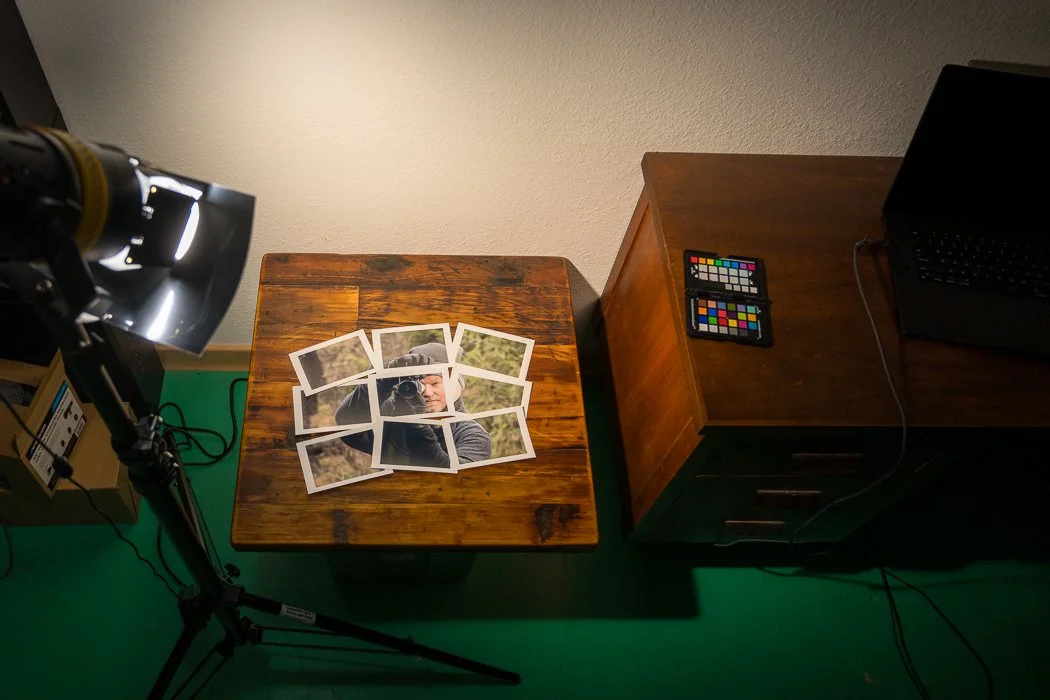Photographic Media: Multimedia Story
Incorporating multimedia elements into storytelling can significantly enhance the narratives you want to convey. By seamlessly blending still images and videos, you can elevate your storytelling, creating a richer and more immersive experience. Still images capture moments and evoke emotions, while videos bring stories to life through movement and sound, adding context and depth. This combination not only captures the audience's attention but also engages them on a deeper emotional level. Using multimedia, you can create a dynamic and compelling story that resonates with your audience, making your message more impactful and memorable. Below, I will provide an example of a multimedia story to illustrate these elements in action.
Creative Portraiture
Using montage to create more creative portraits
Have you ever found it challenging to add creativity to your portrait work? Many artists reach a point where they want to explore fresh and innovative methods to express their vision. By integrating montage techniques into your portrait projects, you can present your images in a new way and achieve a distinctive aesthetic that sets your work apart from traditional portrait photography.
Sean Perry interview about creative portraiture project, Q’emiln Park, Post Falls, ID
As a dedicated student of the photographic arts, my quest for artistic expression drives me to explore various approaches to image creation in our increasingly digital world. I believe it is essential to delve into the analog techniques that laid the foundation for the digital tools we use today. Understanding these foundational methods empowers photographers by providing insight into the principles that inform modern technologies. Those with a solid grounding in analog photography often have a deeper comprehension of digital tools, allowing them to transcend conventional uses and discover innovative ways to utilize these resources creatively.
Sean Perry on location, Friday, November 29, 2024, Q'emiln Park, Post Falls, ID
For this project, I created a self-portrait in a thoughtfully chosen outdoor location that aligned with my artistic vision. The site was surrounded by vibrant natural elements, providing a dynamic backdrop that enhanced the portrait's overall aesthetic. Once I captured the image, I transferred it to Photoshop, where I began to digitally process it.
Self-portrait of Sean Perry, Friday, November 29, 2024, Q'emiln Park, Post Falls, ID
My primary objective was to construct a deconstructed montage, a technique that involves breaking down the original image into smaller, distinct frames. Each frame captures a unique aspect of the portrait, allowing them to collectively assemble into a larger and more cohesive artwork. By utilizing photomontage, a technique with a rich historical context in photography, I was able to explore new artistic avenues and expand my understanding of visual storytelling.
Digital image layout by Sean Perry, Friday, November 29, 2024, Post Falls, ID
After achieving a workable arrangement of the frames, I printed each one as a separate 4x6 print. This step was crucial, as it allowed me to physically hold representations of my work. I then re-photographed these printed images using a traditional camera, creating an analog version that I could directly compare with my digital creation. This process not only highlighted the differences between the two mediums but also deepened my appreciation for the unique qualities each technique can contribute to portraiture. Ultimately, this experience fostered a greater understanding of how to harmoniously blend digital innovation with analog artistry, inspiring future projects and expanding my creative horizons.
Sean Perry using digital tools, Monday, December 2, 2024, Post Falls, ID
To rephotograph this new montage of physical images, I faced the challenge of glare from the photographs. To reduce glare and reflections, I utilized cross-polarization photography, a technique that employs two polarizing filters. I placed a polarizing filter sheet over the light source and used a circular polarizer on the camera lens. By rotating the polarizers opposite each other, I was able to reduce or eliminate glare. This technique allowed me to photograph the tabletop for the background of the digital image, while also arranging and photographing the printed images.
Cross-polarization photography setup, Monday, December 2, 2024, Post Falls, ID
The digital version of the image evokes a montage-like effect, skillfully blending various elements while maintaining a high level of detail in the portrait itself. This unique combination can be especially captivating for individuals seeking a creative and artistic photograph. It allows for an imaginative representation that still highlights the subject’s features with remarkable clarity and precision. Consequently, viewers can appreciate both the artistic interpretation and the sharp, lifelike quality of the subject’s image, making it an appealing choice for those looking to stand out.
Digital image by Sean Perry, Friday, November 29, 2024, Post Falls, ID
In contrast, the rephotographed printed image exhibits a softer level of detail in the portrait compared to a sharply-focused digital image; however, it captures a more authentic, realistic quality. This makes it particularly appealing to those who prefer a vintage aesthetic, where the overall visual experience takes precedence over the precise sharpness of the subject.
Rephotographed analog image by Sean Perry, Monday, December 2, 2024, Post Falls, ID
While this approach yields a charming, nostalgic feel, using a higher-quality printer equipped with advanced capabilities and a higher dots per inch (dpi) resolution would enhance the images further. Such a printer would likely produce results that closely resemble the original digital files, preserving more subtle nuances and details. This would not only improve the quality of the prints but also provide opportunities for deeper exploration and experimentation with various techniques.
This project allowed me to experiment and innovate, which is always my goal as a student. I continuously seek to incorporate new tools and techniques into my artistic repertoire, and this exploration of photomontage has significantly enriched my understanding and approach to photography. The process was both challenging and rewarding, as it pushed me to think critically about composition, layering, and the interplay between various elements in my work.







